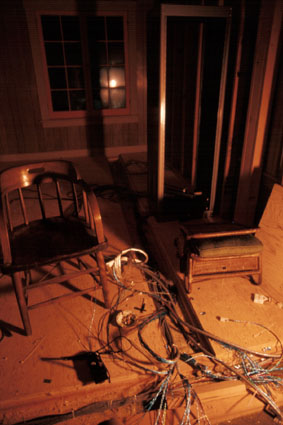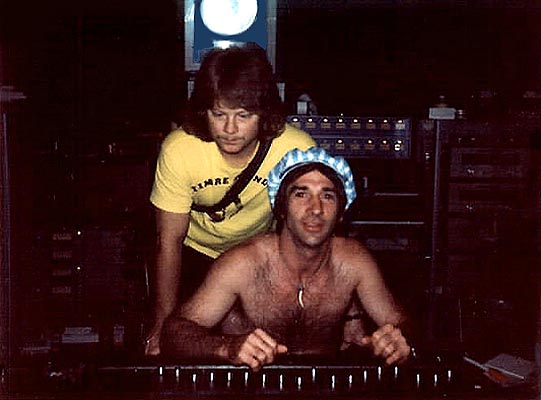|
For
a long time, I had been a home recording enthusiast,
although it was mostly
doodling.
|

|
About
1961, my dad had given me an early model of a
home-style "sound on sound" stereo recorder called,
"The Voice of Music." I was smitten with the
recording process. American Recording Studio was
like finding the "Holy Grail" for me, in many ways.
Due to the demise of S.S. Fools, I decided to
pursue it to the max and turn it into a business. I
converted part of my home into a full-blown QUAD
recording studio. About 1972 or '73, when
Quadraphonic systems were new, it looked like that
was definitely going to be the wave of the future.
For some reason, that never
happened.
|
The
public can be very fickle when it comes to their home
electronics, and today, are into surround sound, which has
many of the same properties that the quad systems had. I
suppose the first thing wrong with the QUAD format is that
basically, you can't listen to it with earphones. I heard of
two ideas that sounded promising to me. One involved a chair
that had a shell around the top and sides that had 4
speakers, with a discreet channel for each. This sounded
promising, because it was simple and in a controlled
environment. Another idea was a set of quad earphones being
developed that involved a huge hat you would wear that had 4
speakers built into it. It sat somewhat away from your head,
to allow the quad field of sound to be realistic. The chair
was the best of the two. Quad just never took off, for some
reason.
For
the audio buffs out there that would like to hear the techno
talk about my studio: I had a 3M79 16 track tape recorder
that used 2" tape (usually
Ampex 456, due to it's high bias and 3db hotter printing
capabilities) and
an Auditronics 501 - 22 x 16 recording/mixing console. Plus,
a 4 track Ampex machine (1/2"
tape)
and a 2 track machine used for mixing stereo or for tape
delay. No live echo chamber, but I had a 7 foot long version
of a German EMT 170, that was an early plate reverb. It had
amazing sound, as well as remote control muting, which could
change the length of the delay, giving it the sound of a
small room, if needed. It was installed in a huge crate in
my garage. As for monitors, I had 4 Altec 604e's as speakers
(2
in front, 2 in back),
and an arched, double-glass window between the control room
and the studio, with a 9" thick door going to the living
quarters with lots of wood in the motif. A Steinway "A" in
the studio, C3 Hammond with Leslie, a Rogers drum set,
baffles and full bay of quality microphones, including
Neuman U87's, Sennheiser 441U's, AKG's and a bunch of
Shure's. I was in heaven.
After
working all those years with Three Dog Night at American
Recording, I had learned a lot. I decided that, even though
I had done my best to absorb all I could from Richie and
Bill, it would still behoove me to enroll in an audio
engineering course. I wanted to really understood the signal
path, starting from the microphone, all the way through the
console, using outboard gear such as limiters and noise
gates, as well as learning to align and tweak the recorders.
I researched it and chose a course called, "Sound Masters,"
that was being offered in North Hollywood. There was also a
section on mastering included. It was a good choice and
definitely helped me to meld the performing end, with the
technical side of recording music. The recording console is
just as much of a musical instrument as any one of the
instruments recorded, having multiple means of artistic
expression. Besides, I loved the engineering side, another
love of mine that I owe directly to Richie and Bill. Of
course, the first rule of engineering is to "capture what is
being performed and preserve it faithfully to a storage
media." Engineers think they can fix anything and do many
times, but basically, it is fundamental to remind yourself
to "just get it on tape correctly" ... er, hard drive, that
is. Not always as easy as it appears.
|
Studio
construction just starting
|
Me at
the console as the studio neared
completion.
|

|

|
|




